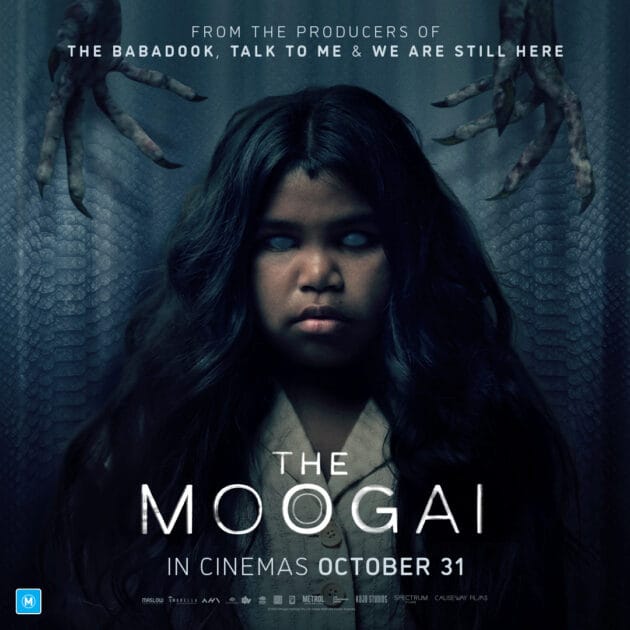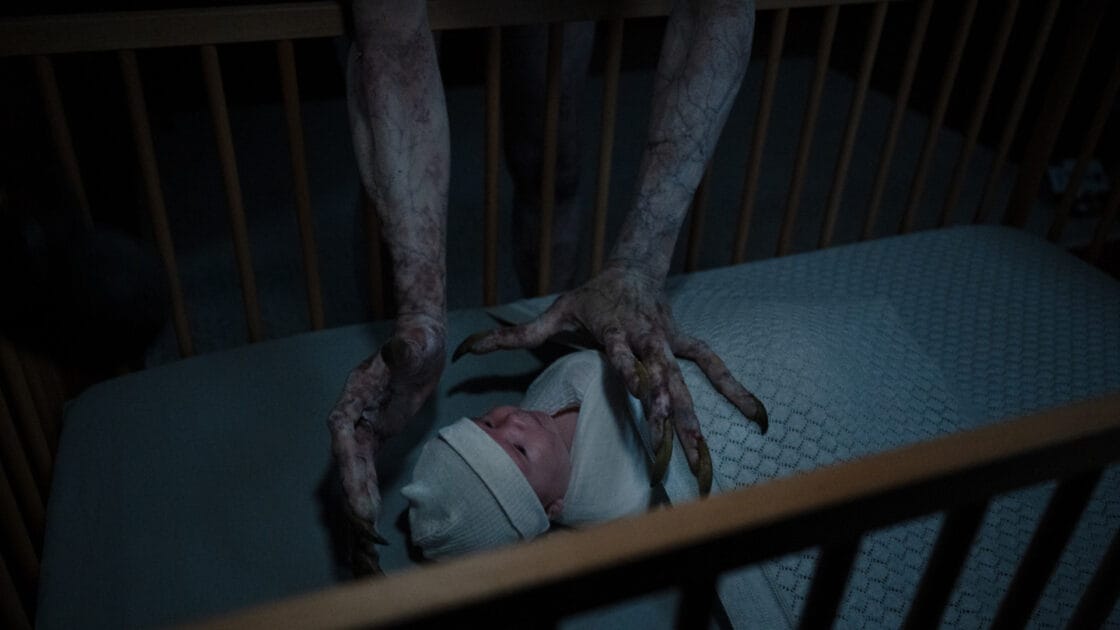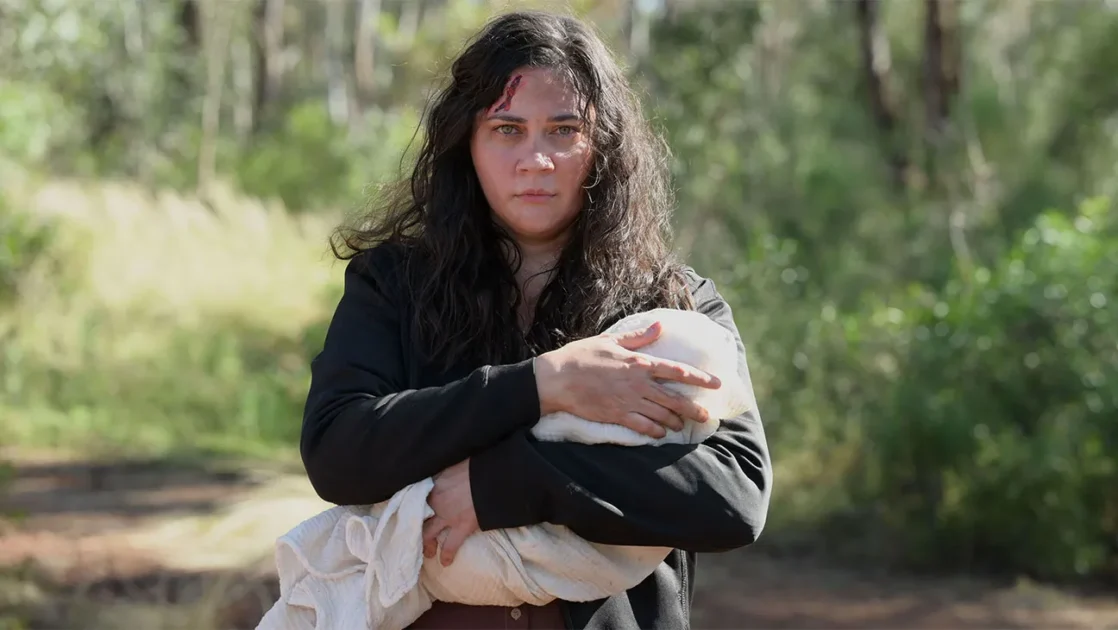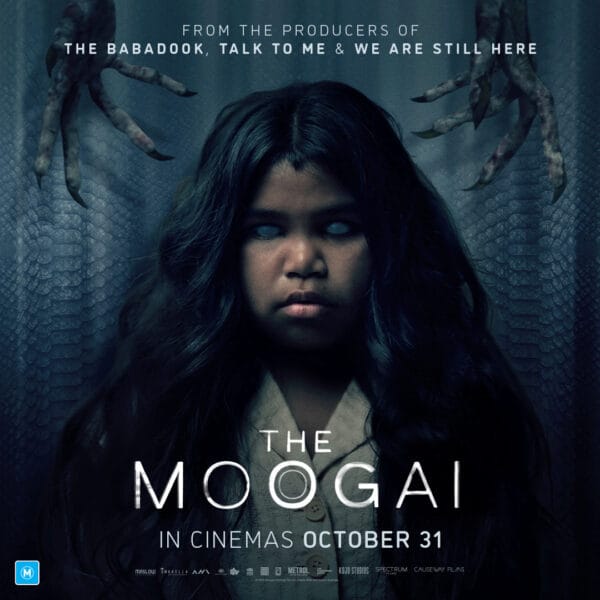The Moogai: When Cultural Horror Loses Its Teeth
The Moogai review: Jon Bell’s Indigenous Australian horror film attempts to blend post-partum anxiety with colonial trauma through supernatural scares. While the creature design works and cultural themes matter, the execution feels disconnected from its own ambitious goals. Our spoiler-free review examines how this 2024 horror film handles generational trauma, family dynamics, and the challenge of making accessible cultural horror that doesn’t sacrifice authenticity for mainstream appeal.

Jon Bell’s The Moogai wants desperately to be Australia’s answer to Get Out, and in some ways, it succeeds. In others, it stumbles over its own ambitious intentions, delivering a creature feature that’s more interested in metaphor than genuine scares. This Indigenous Australian horror tackles the stolen generation through a supernatural lens, but the execution feels as disconnected as the generational trauma it’s trying to portray.
While this review avoids major ending reveals, some scenes and cultural themes are discussed in detail. Proceed if you’re ready to unpack some heavy generational trauma.
Post-Partum Paranoia Meets Colonial Horror
The film opens with a gut-punch of historical context, white officials in suits hunting down Aboriginal children with the clinical efficiency of cattle rustlers. “Breed the color out of them in foster homes” becomes the chilling mission statement that echoes through every frame that follows. It’s a powerful opening that sets expectations the rest of the film struggles to meet.
Flash forward to 2024, and we meet Sarah Fisher (Shari Sebbens) at her baby shower, all glowing expectancy and traditional remedies courtesy of her culturally-rooted mother. But childbirth becomes a near-death experience, and when Sarah is resuscitated back to life, something else stirs in the shadows. The hospital sequences feel authentically claustrophobic, a small Indigenous woman surrounded by white clinical coldness, her traditional mother armed with cultural knowledge that modern medicine dismisses.
The hallucinations start immediately: eggs cracking open to reveal bloody, twitching chicks. It’s visceral imagery that works because it taps into that primal fear of something being fundamentally wrong with new life. Sarah’s daughter begins sleepwalking, whispering “He’s coming” in that way kids do, which makes your spine crawl. These early supernatural elements genuinely unnerve because they’re rooted in recognizable parental anxiety.
The Monster in the Room
When the Moogai finally reveals itself, this long-haired, pale specter that embodies both traditional boogeyman and colonial oppressor, the creature design actually works. There’s something genuinely unsettling about how it moves, how it watches, how it represents both ancient fears and historical trauma made manifest. The visual effects serve the story rather than dominating it, which feels refreshing in an era of CGI overkill.
But here’s where the film starts losing its grip. The title really utilizes post-partum psychology better than actual crazy, more sleep is prescribed, so sleeping tablets get doled out because they never made anyone crazy, right? The medical gaslighting feels authentic, especially when Fergus (Meyne Wyatt) has Sarah committed because he thinks she needs rest. It’s a decision that reeks of paternalistic control, though whether it’s good for their future remains frustratingly unclear.
Cultural Authenticity vs. Accessible Horror
The problem with The Moogai isn’t its ambition; it’s how it handles that ambition. Bits of disconnected generational trauma get flashed about through the monster’s perspective, but it feels thumped over your head rather than woven organically into the horror. The film seems unsure whether it’s making a cultural statement or delivering crowd-pleasing scares, and in trying to do both, it dilutes the impact of either.
Did they sanitize it for mainstream consumption? That’s the nagging question that shadows every scene. Most people will watch this for the controversy and cultural nuance, but there’s not enough historical depth here to satisfy that hunger. The colonial trauma becomes shorthand rather than lived experience, reduced to visual metaphors that feel more like film school exercises than genuine cultural expression. Did they strip it of its cultural teeth?
Do you love Aussie flicks? Mother of Movies has loads: We recommend any of these: Rippy The Red | Best Australian True Crime Stories | Never Be Done + Klink Klunk Klonk | Bloody Hell or Red Billabong

Action Hero Fergus and Bush Survival
When Fergus finally sees the monster, too, the film shifts into action mode that feels completely disconnected from its psychological horror roots. He breaks Sarah out of the facility, taking out security like some tiny warrior hero, then nearly micro-sleeps the family into vehicular death. The tonal whiplash is jarring; we’ve gone from cultural horror to escape thriller without earning the transition.
The final act pushes further into survival territory. More white guys with tasers at the servo, Sarah fleeing into the bush with the kids, finding her mother, who prepares for battle only to get bitten and die. It’s here that the film completely abandons its psychological complexity for straightforward monster movie mechanics. Sarah paints herself with ash, gains disappearing powers, and they bury the threat outside to live happily ever after.
Post-Partum Horror Meets Colonial Trauma
The ending feels like a betrayal of everything the film set up. This should be about systemic oppression, about trauma that can’t be easily buried, about the ongoing impact of cultural genocide. Instead, we get a monster that can be defeated with traditional knowledge and ash paint, as if centuries of colonial damage could be so simply resolved.
The film doesn’t do justice to its own story, or to the families whose real experiences inspired this fictional framework. There’s a powerful film buried somewhere in The Moogai, but it’s lost beneath surface-level scares and metaphors that never fully develop into meaningful commentary.
Technical Merits and Missed Opportunities
The cinematography captures the claustrophobic hospital environments effectively, and the sound design works overtime to build tension in domestic spaces. Sebbens delivers a committed performance that grounds the more fantastical elements, and the supporting cast brings authenticity to family dynamics that feel lived-in rather than scripted.
But technical competence can’t mask fundamental storytelling issues. The film wants to be both accessible horror entertainment and a profound cultural statement, but achieves neither goal fully. It’s too heavy-handed for mainstream audiences and too simplified for viewers seeking genuine engagement with Indigenous Australian experiences.
A Weak Story Wrapped in Good Intentions
The Moogai represents important progress, Indigenous Australian voices in horror, cultural themes getting mainstream attention, and creature design that serves a metaphorical purpose. These elements matter, and the film deserves credit for existing in a landscape that too often ignores these perspectives.
But good intentions don’t automatically create good films. The story feels rushed, the character development feels thin, and the resolution feels unearned. We needed more time with this family, more understanding of their cultural connections, more exploration of how historical trauma manifests in contemporary life.
Instead, we get a monster movie that occasionally remembers it wants to be something deeper, then quickly retreats to safer horror territory when the cultural complexity becomes challenging.
Where to Stream The Moogai – Australian First Nations Horror Film
The Moogai is rated
2.5 Cultural metaphors that needed more development out of 5

Film Information
Director: Jon Bell
Writers: Jon Bell
Cast: Shari Sebbens, Meyne Wyatt, Tessa Rose, Clarence Ryan
Production: Causeway Productions
Genre: Horror, Thriller
Runtime: PT1H26M
Release: 2024
The Moogai

Director: Jon Bell
Date Created: 2024-10-31 13:05
2.5
Pros
- Great effect
- Effective looking monster
Cons
- Didn't stand up for itself
